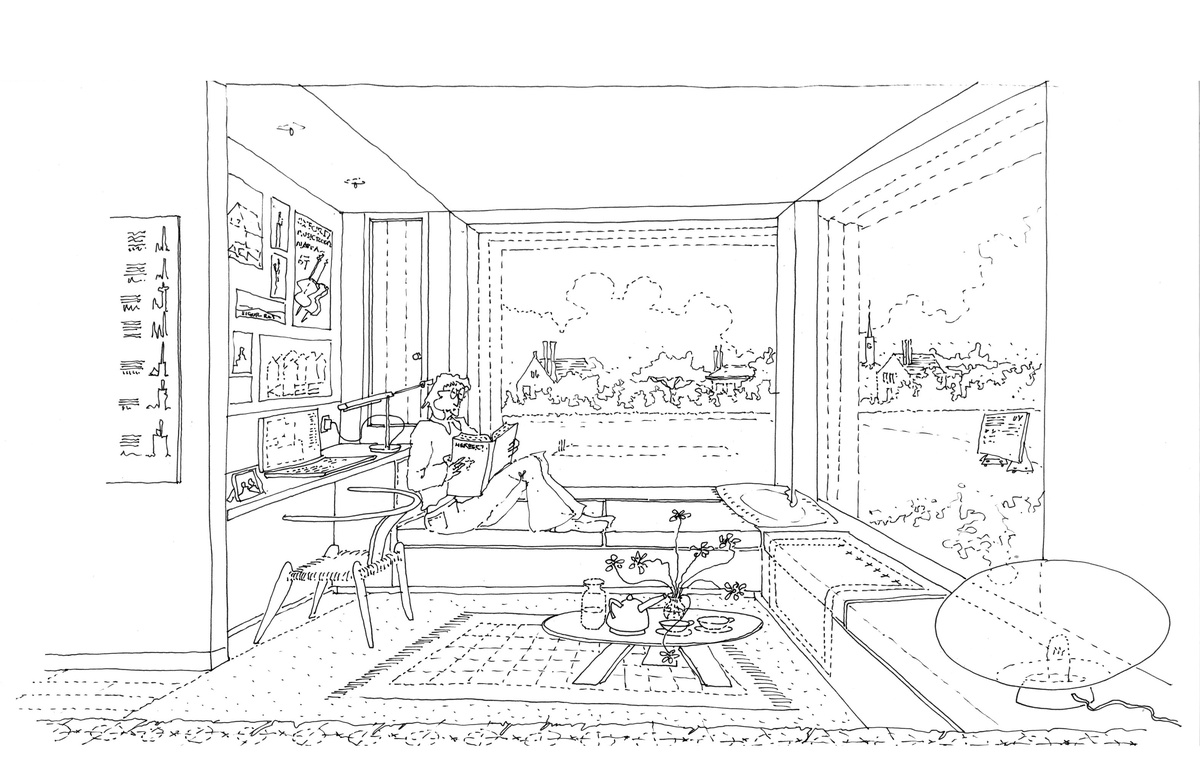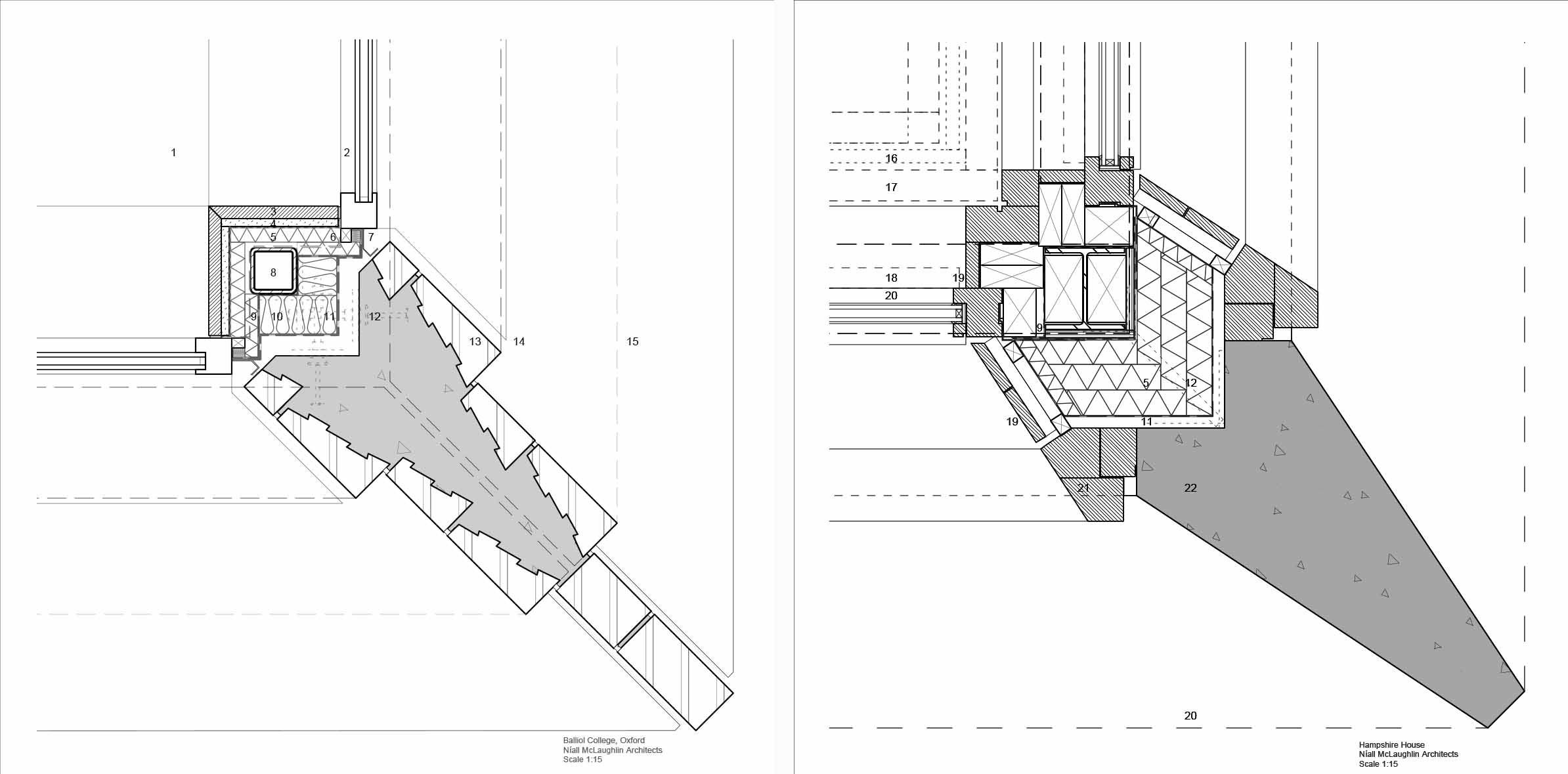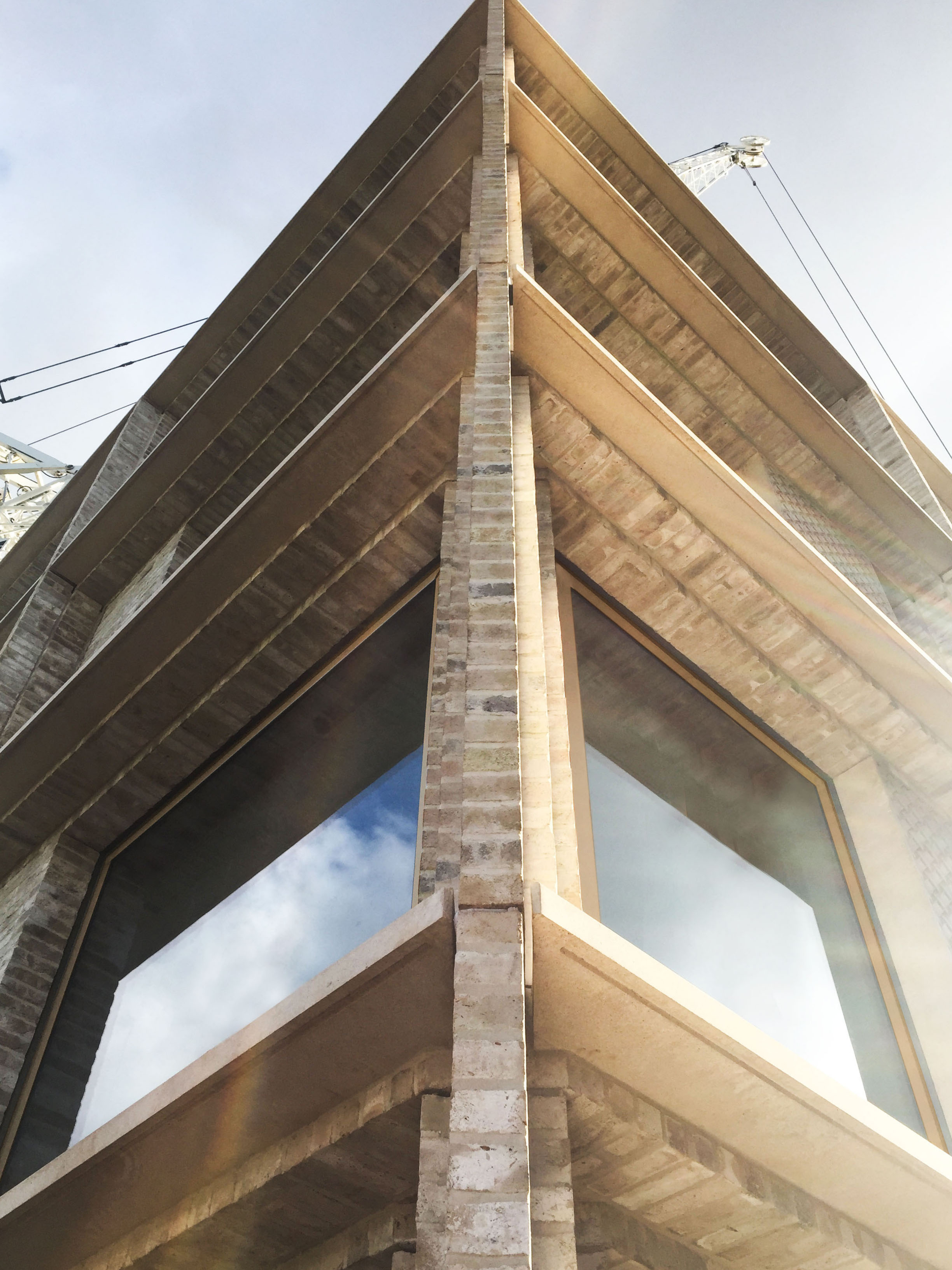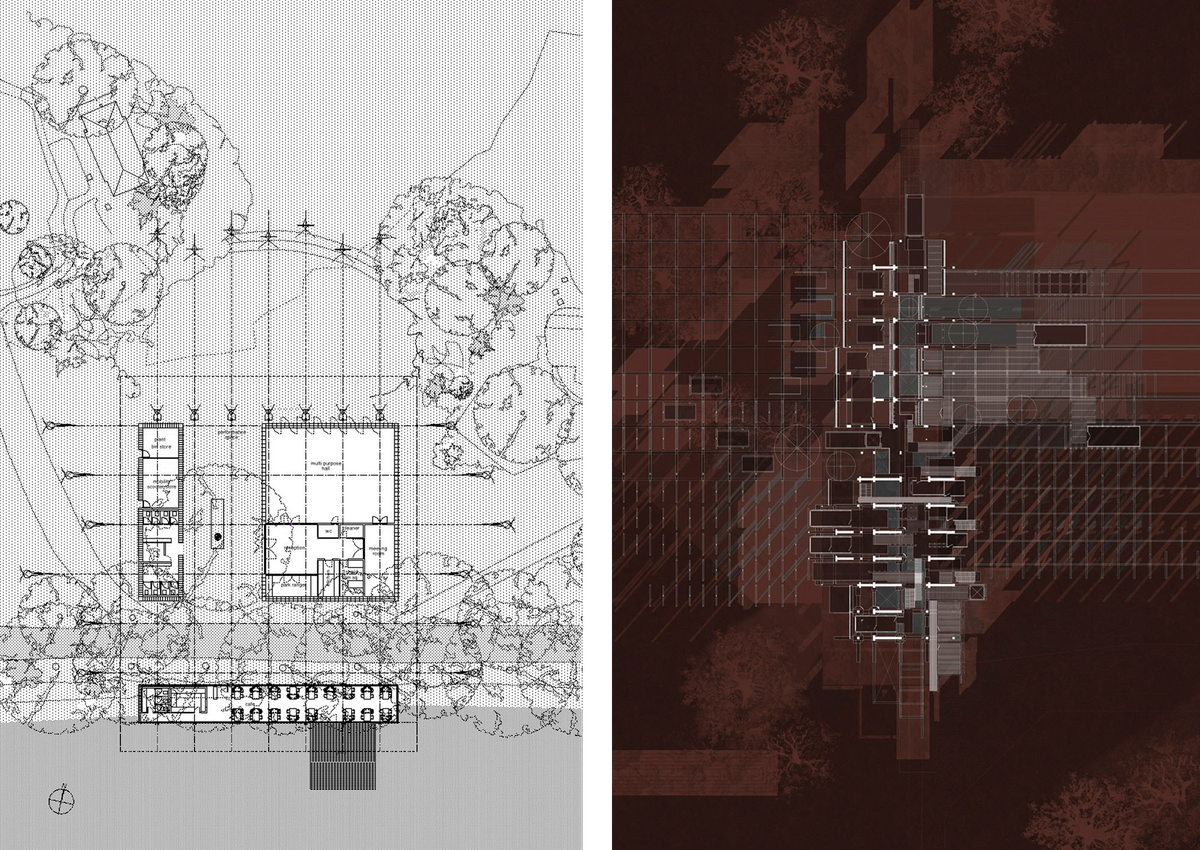MASTER’S FIELD PROJECT
APRIL 2019

When reflecting on the work of our practice, the chamfered corner, is a recurring interest. This detail has developed over the years from our preoccupations with the Miesian re-entrant corner, the simplicity of a trabeated structure, and a desire to find ways of expressing a deep façade.
Simple chamfers in concrete and stone were employed in recent completed projects for Hampshire House and The Sultan Nazrin Shah Centre, Oxford. At the Master’s Field site in Oxford, currently under construction for Balliol College, a corbelled chamfered detail is incorporated in a load bearing façade. This project comprises eight student accommodation buildings and a pavilion arranged around a series of courtyards overlooking a cricket pitch.

A brick-clad chamfer at the corner between two windows is used throughout the accommodation buildings. This establishes a shifting perspectival relationship as one moves through the site, and gives all the buildings a common language. Corbelled brick and concrete lintels and mullions set up a trabeated structural rhythm which clearly defines each individual student bedroom and creates a delicate play of light and shadow across the façade. A series of finely detailed brick and concrete panels are layered within the depth of the window reveal, articulating a secondary rhythm which expresses the transition from solid to glazed elements.
The detail enables the depth and structure of the wall to be elegantly expressed, maximizing its presence when viewed externally and minimizing its presence internally. It also forms a generous threshold which provides privacy for students inside engrossed in their study. For moments of welcome distraction, the large picture windows frame uninterrupted views over the cricket pitch and across the campus.
The expression of a chamfered corner produces challenges in construction, particularly when expressed in precast concrete components clad in corbelled brickwork. When forming acute angles with orthogonal bricks, special consideration must be given to alignments and bonding. Interface details demand careful thought regarding sequencing and tolerances to achieve a symbiosis of structural performance with aesthetic ambition.
Externally, in the plan detail shown here, the apex of the chamfer is formed from stacked brick headers. This exposes three faces of each brick, limiting the choice of bricks, which are typically produced with only one finished stretcher face. Brick specials are required to form the chamfered corbel of the lintels, and grids are carefully set out to ensure alignment of vertical and horizontal corbelling. We looked to the meticulously detailed and crafted brickwork of Jensen-Klint’s masterpiece, Grundvig’s Church in Copenhagen, for expression of stepped vertical forms.
Internally, minimising the corner where the windows meet produces intricate challenges in the alignment of linings, blinds, reveals and fitted furniture. This complex resolution of constituent parts all work hard to achieve the aesthetic objective of the simple glazed chamfered corner.

Detail Key
1.Whitewashed ply bench 2. Aluminium window 3.Whitewashed plywood reveal 4.Plasterboard 5.Rigid insulation 6.Steel window fixing brackets 7.Metal pressing 8.Wind post 9.EPDM/ vapour barrier 10.Mineral wool insulation 11.Breather membrane 12.Steel restraint brackets 13.Corbelled brick faced precast concrete mullion 14.Flashing 15.Concrete cill 16.Concealed curtain track 17.Oak joist over 18.Concealed roller blind 19.Timber panels 20.Timber framed window 21.Prelaminated timber frame 22.Precast concrete mullion 23.Precast concrete coping over
SCREENS
JUNE 2015

Images: Avenham Park Pavillion, Preston. The Institute of Timber, Detroit
‘What do you see when you look up through the trees? Try to imagine this moment in a pretended place or part of a journey through a particular sequence of spaces. How does one describe this experience? What is it about spaces in nature, for example forests, which make them fascinating yet at the same time unsettling places to inhabit? A forest offers a place of refuge and natural beauty where the element of surprise is all part of the experience’
The idea of nature as a spatial experience and a driver for architectural form was a question that ran through my academic work and has subsequently led to an obsession with a perceptual and evolving architecture. It is interesting that my time in the office has allowed me to both reflect and discover parallels that run through similar themes in the work of the practice. A pursuit for a “thicket-like” characteristic, which allows for shifts in spatial qualities and a variation of patterns that overlay like woven surfaces to define space are just some of the mannerisms that I have begun to recognise.
I compare my own attempt to generate a kind of place that is animated, brightening as you ascend towards the canopy when reading the blurred lines of the roof of the pavilion designed for a woodland park in Preston. The structure is designed as a number of layers of mesh to capture rain whilst creating a display of shadows that activate the building beneath. As a competition proposal, the structure was never fully realised yet it has been the ideas established during this process that still resonate today. By staggering the building between the tree density, the line of the pavilion is undefined breaking the traditional form of constructing space and allowing a new reading of the building and landscape. Particularly enlightening in the search for the enclosure of space is a fruition of a screen-like quality that works as a surface and also as a generator of it’s tectonic form.
The use of the screen as a ‘device’ in our architecture allows elements to become not only separators of rooms or the external environment but also actuators for unique and unimagined spatial experiences. In search of this architecture is an attempt to purposefully discover a different architecture and an unplanned result that wouldn’t necessarily be reached through something un-natural.
Benni Allan graduated from the Bartlett with Distinction in 2014, and has been working on a project for Jesus College, Cambridge since joining Niall McLaughlin Architects. In February 2015, Benni was named as one of the nation’s up-and-coming designers and ‘One to Watch’ by the Design Council to represent the future of British design. His project the ‘City of Forests’ looked at beautifying Detroit through reforestation strategies to promote a denser, greener and more sustainable future in which timber becomes the main economic output. As Detroit continues to struggle with the effects of massive industrial changes, this more positive image of vacancy as an asset opens new discussions about the future post-industrial city.



